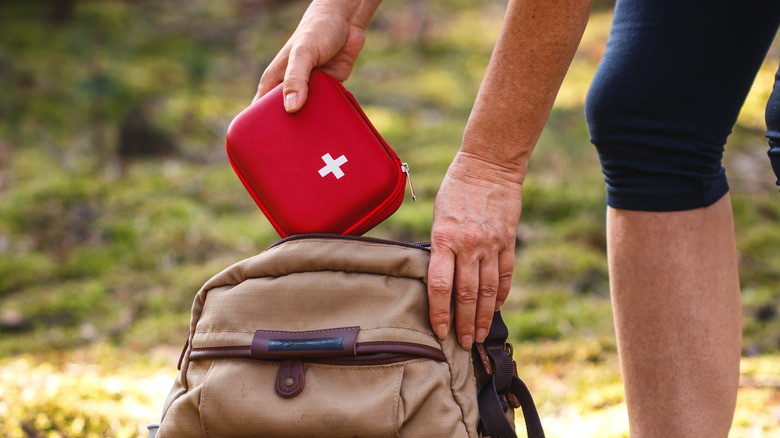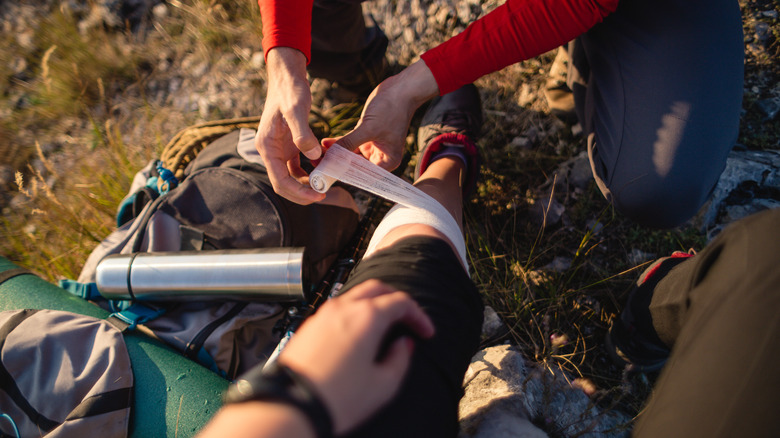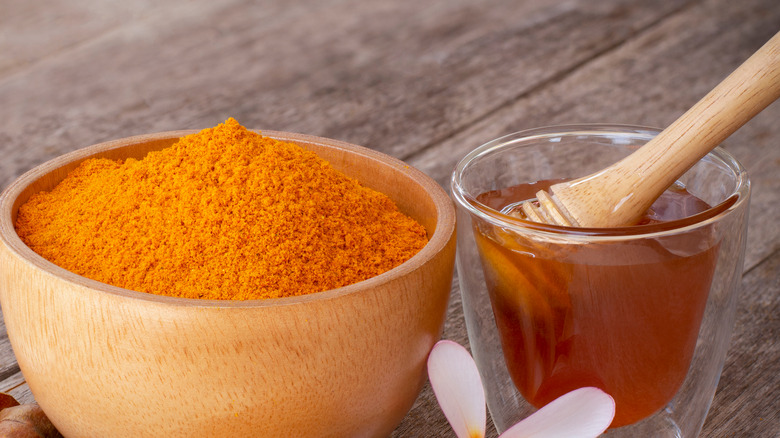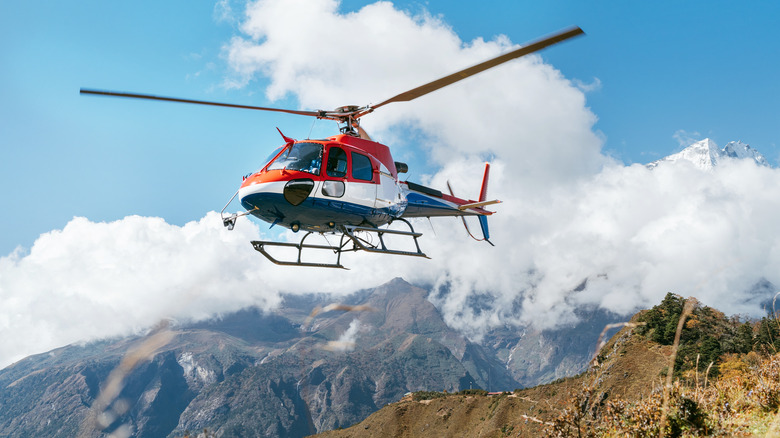How To Treat An Infected Cut While On Your Camping Trip
After controlling the bleeding, preventing infection is the most important thing you can do if you get a cut, scrape, or wound while out in the wilderness. Bacteria can grow quickly in an untreated cut, especially ones caused by unclean objects in outdoor environments. Slipping while whittling, accidentally getting a fish hook caught in your thumb, being stuck with cactus needles, or even being bitten by a wild animal can all lead to infection. Without easy access to medical evaluation and medicine, they can become dangerous.
As soon as you get a cut while camping, you should thoroughly rinse it out using clean, potable water and wash it with soap. If you see anything stuck in the wound, like dirt or gravel, get it out. Antiseptics, like hydrogen peroxide or rubbing alcohol can irritate your skin, but if you are out in the wilderness camping and it's likely the cut was contaminated, it's a good idea to use them. If you have an over-the-counter topical antibiotic ointment with you and have safely used it before, you should apply it.
In many cases, small cuts and scrapes will heal up on their own. While camping, however, it's vital to keep an eye on your cut to make sure it doesn't get infected. If it does, here's what to do.
Monitor the cut
In general, if the cut is looking better and hurting less, that's a good sign that you are healing up. If it hurts more and is red or swollen, it's probably infected. You may also notice that the skin is warm to the touch. If it releases yellowish discharge or smells off, it's definitely infected.
As you continue to treat your infection, it's vital that you keep track of any changes to see if it is getting better or worse. One method often used by people in the wilderness is to use a pen to mark the perimeter of the redness and swelling around the cut. If the redness grows beyond the pen marks on your skin, the infection is likely growing. If it grows smaller, then it may be responding to treatment. If you have a working cell phone with you, you may also want to take clear photographs of the injury at regular intervals to compare over time.
Keep it open, clean, and covered
While it may be tempting to stitch up or superglue risky injuries, it's not a good idea. According to the CDC, contaminated wounds, punctures, and animal bites should be left open. While closing a wound can help prevent new contaminants from getting in, many injuries in the wild are already dirty, and closing the wound just traps bacteria inside.
If you believe that a cut is infected, you should soak it in hot water for about 30 minutes three times a day. You should also do your best to keep it clean and remove contaminants like dirt. If you have a squeezable water bottle, you can use that to flush out the cut. If you don't, consider pouring clean, potable water into a plastic bag and making a hole in it with a safety pin. The resulting stream of water should be perfect for cleaning your cut.
A wet bandage with a semipermeable film is a great choice for healing wounds, but as noted in an article from Wilderness and Environmental Medicine, when your options are limited by being in the woods, any clean bandage that keeps out dirt is a good choice.
Possible remedies
It's always a good idea to bring a first aid kit stocked with things you may need to prevent and treat infection if you are going to be camping far away from medical facilities. If you find yourself in the wilderness without access to your first aid supplies, however, there is some evidence that these household pantry staples could be an alternative.
If you happen to have honey with you on your camping trip, it might be a good substitute for a topical antibiotic. As described in a 2014 article in Wilderness & Environmental Medicine, the use of honey for treating wounds dates back to ancient times. Honey has been shown to be effective as a treatment for infected injuries like burns. In one study, patients treated by having unprocessed honey put on their infected wounds healed faster than those treated with iodine. In another, patients whose wounds had been resistant to antibiotics improved with topical applications of honey.
If you were planning on cooking while camping, you might have packed some turmeric. This yellow spice contains curcumin, which is believed to have anti-inflammatory, antibacterial, antifungal, and antiviral properties. As described by a 2020 article in the Pharmaceuticals, how effective curcumin is depends on the bacteria and more testing is needed. However, in an emergency situation, it might be worth trying.
Evacuation
As disappointing as it is to have to call off a camping trip early, it's not worth risking your health and safety to stay in the wilderness if you have an infection that isn't getting better on its own. Small cuts and scrapes may heal up quickly with proper care, but if your wound is not improving or if you are experiencing serious symptoms like red streaks on your skin around the wound, a fever, aches, or nausea, it's time to get emergency help.
As described by a 2014 article in Wilderness Medical Society Practice Guidelines, if your wound seems to be infected and you don't have access to appropriate antibiotics (which would likely be systemic) then you should call off your trip and seek emergency medical assistance immediately. If you are immunocompromised due to a medical condition or medication, you will need to take injuries and infections even more seriously. If you have not had a tetanus shot, you may need to consider getting medical attention more quickly after a dirty injury. If your injury was caused by an animal bite, it needs medical attention.




